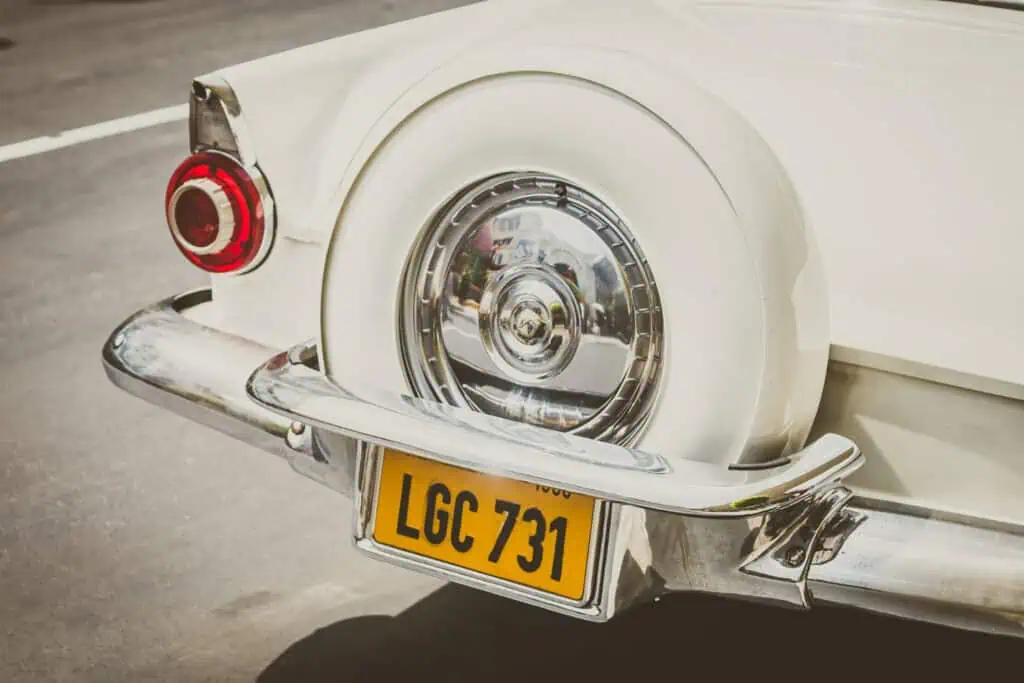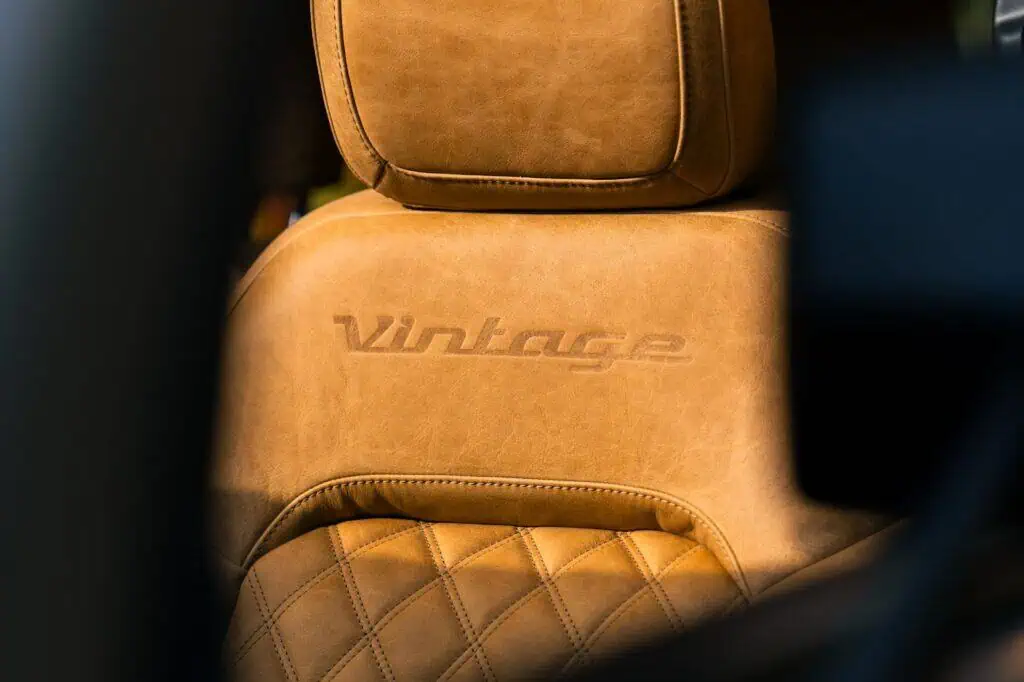Thinking about driving a custom or classic-inspired vehicle in California? Before you can hit the road, you’ll need to consider how it gets registered. Here’s the truth: registering old restorations, restomods, or DIY specialty cars in California can be a serious headache. Between strict emissions laws, inspections, and endless paperwork, many owners find the process more frustrating than fun.
But here’s the good news: a Modern Classic by Vintage isn’t a specially constructed vehicle (SPCNS) at all. Our builds are designed, tested, and manufactured to meet the same safety and emissions standards as any modern vehicle. That means your registration process is just as simple as it would be with any modern SUV.
What Counts as a Specially Constructed Vehicle in California?
The California DMV defines a specially constructed vehicle as one that is built from various new or used parts and does not fully resemble a manufacturer’s make or model, or is a replica or re-creation of another vehicle, but not built by the original manufacturer.
This category is meant for vehicles that are entirely constructed outside of licensed manufacturing, often by private individuals for personal use and not eligible for resale.
This can include:
- One-off custom builds or kit cars
- Scratch-built vehicles
- Replica or re-creation cars
Does not include:
- Vehicles that have been repaired or restored using replacement parts
- Vehicles modified from their original design, but still retaining their manufacturer-issued VIN and identity
If your car meets the SPCNS definition, it must go through California’s SPCNS registration process, a more detailed series of inspections and paperwork than standard registrations. Once approved, it will be road-legal and insurable like any other vehicle.
Step-by-Step: How to Register a Custom-Built Car in California

Here’s the accurate, DMV-approved order of steps for registering a custom-built or specially constructed vehicle, restoration, or restomod.
Step 1: Start at the DMV
You’ll begin by completing and submitting:
- REG 343 – Application for Title or Registration
- REG 5036 – Statement of Construction (details your build)
- Proof of ownership for major parts (receipts, bills of sale, Manufacturer’s Certificate of Origin)
If ownership documents are missing, you may need a Motor Vehicle Bond (REG 5057) if the total value of undocumented parts exceeds $4,999.
Step 2: Get a Vehicle Verification & VIN Assignment
The DMV will give you REG 124, authorizing the California Highway Patrol (CHP) to inspect your vehicle. CHP will:
- Verify the build
- Assign or verify a Vehicle Identification Number (VIN)
- Check for stolen parts
Tip: Your car must be fully assembled and drivable for this inspection. Incomplete builds are often rejected.
Step 3: Brake and Lamp Inspection
A California-certified brake and lamp station must inspect your vehicle and certify that all braking and lighting systems meet state safety standards.
Bring proof of this inspection back to the DMV.
Step 4: Emissions Compliance (Smog Rules)
California has strict emissions laws. Your first emissions check must be done at a BAR Referee Center (Bureau of Automotive Repair). The BAR will issue a Specially Constructed Vehicle emissions label. Unfortunately, the majority of restorations and restomods struggle to pass emissions.
Your emissions requirements will depend on the engine year or the vehicle’s assigned model year by BAR.
Some SPCNS vehicles may qualify for an exemption if you secure a Certificate of Sequence (REG 5075) issued to the first 500 SPCNS applicants per year.
Step 5: Submit All Documentation & Pay Fees
Return to the DMV with:
- Completed forms
- CHP VIN verification
- Brake/lamp certificates
- BAR emissions label
- Any required weight certificates or additional statements (REG 256)
Fees include:
- Registration
- Title fees
- Use tax (based on vehicle value, including labor)
Step 6: Get Your Title & License Plates
Once approved:
- You’ll receive a California title for your specialty vehicle
- Standard or custom plates will be issued
- Your vehicle is now fully street-legal
The Headache of SPCNS and Restorations
SPCNS vehicles require multiple inspections (DMV, CHP, BAR Referee)
- They must pass brake, lamp, and emissions testing.
- Only the first 500 applicants each year can apply for a “Certificate of Sequence” to potentially ease emissions rules.
Without it, most SPCNS cars face strict smog requirements they were never designed to meet. Restorations and restomods often fail emissions outright.
In short, old builds equal endless red tape.
Why a Modern Classic Is Different

Vintage Modern vehicles are not SPCNS builds. They are significantly easier to register than a restoration or restomod and follow the standard vehicle registration process in California.
Our Modern Classics are built on a modern Ford chassis and are fully certified to meet California’s safety and emissions standards.
Designed with safety and structural integrity that meet the current regulations. This means:
Registration is as straightforward as any standard vehicle, passes emissions and smog checks like a modern SUV, because it is one.
No need for BAR referee labels or sequence numbers and no risk of rejection.
Your Modern Classic is road-legal from day one.
While SPCNS vehicles leave you tangled in inspections and smog checks, a Modern Classic by Vintage delivers peace of mind, safety, and simplicity.
Can You Modify Your Car in California Legally?
Yes, but only within California law. The California Vehicle Code (CVC) requires that:
- Emissions systems remain compliant — no tampering, removal, or bypassing of required pollution control devices.
- Noise limits are respected — passenger vehicles under 6,000 lbs GVWR must not exceed 95 dB(A) when tested.
- Safety systems (brakes, seat belts, lighting) meet state standards.
- Certain engine swaps, lighting upgrades, or suspension changes may need additional inspection or BAR certification.
Why It Pays to Register Your Custom Vehicle Correctly
- Protects Your Investment – Registration ensures legal ownership, makes your car insurable, and boosts resale value.
- Avoids Legal Issues – Improper registration can lead to fines, impoundment, or insurance denial.
- Proves Provenance – Especially valuable for luxury or collector builds.
Vintage Modern Builds and California Registration

Our Modern Classics are engineered with the structural integrity, safety features, and performance standards that meet California’s registration requirements and pass all emissions and CARB requirements, unlike a traditional restoration or restomod.
Our goal is to ensure that when your Modern Classic is delivered, you have a vehicle built with compliance in mind—making your path to legal registration as straightforward as possible in your state.
Conclusion
Registering a Modern Classic by Vintage is easy and straightforward in California. Unlike restorations or restomods that face endless inspections and smog challenges, a Modern Classic passes every requirement from the start. You’ll be able to enjoy your build legally and confidently for years to come.
Why wrestle with outdated headaches when you can drive a classic-inspired SUV that’s already road-legal?
Ready to build your Modern Classic by Vintage? Talk to our team today.